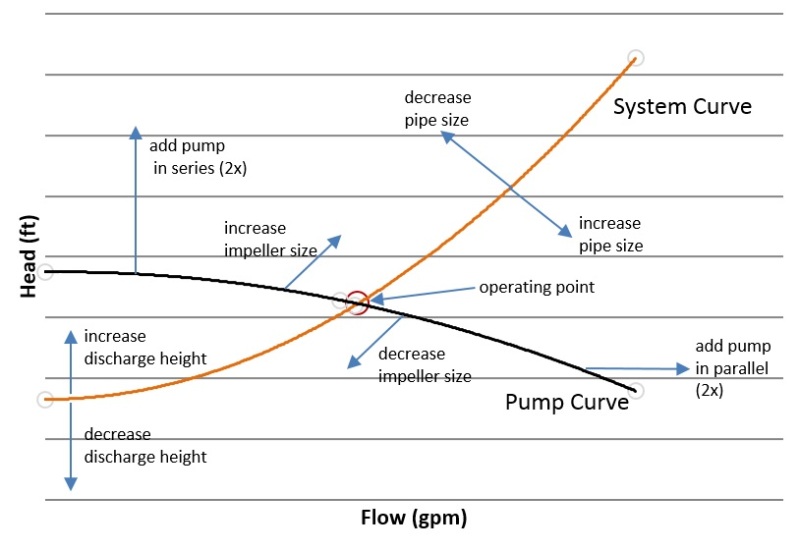Artist, below I respond to your numbered comments. Our differences probably represent differences in both experience and design philosophy.
1. Head is an integral part, yes, but I have never seen it as the objective. It is an effect of flow.
2. In my experience - head is understated, but it shouldn't matter if you put your safety factor on the available power rather than the head.
3. I have successfully designed this way for systems with single and multiple pumps in excess of 5000 HP and have applied orifice plates or discharge baffles to control over capacity when the installed system deviated from the plans or pump was repurposed from another system (which is the majority of my experience).
4. Can you give an example of a centrifugal pump that does not follow a quadratic curve that goes from high head/low flow to low head/high flow? This would be unique in my experience.
5. -
6.I'm talking just to the right. If you're still on manufacturer's curve, and not extrapolating, you should be fine. Of course you check NPSH, but you would do that anyway.
7. This is where we probably have the greatest difference. Getting a hold of real "knowns" including actual static lift, viscosity, actual pipe length, fitting count, and sometimes even SG in the 5 minutes to a half an hour I normally have to select a pump is a pipe dream. Designing to the right of BEP along with some educated guesses has helped me to consistently select for robust systems which have rarely needed rework, and when they have, its limited to impellers or orifices. Always have a plan B.
I might note also, that selecting a pump per Lilliput1's comment, design for head + 15% will put the actual operating point to the right of BEP so long as "design for" means for best efficiency.
I used to count sand. Now I don't count at all.


![[wink] [wink] [wink]](/data/assets/smilies/wink.gif) .
.